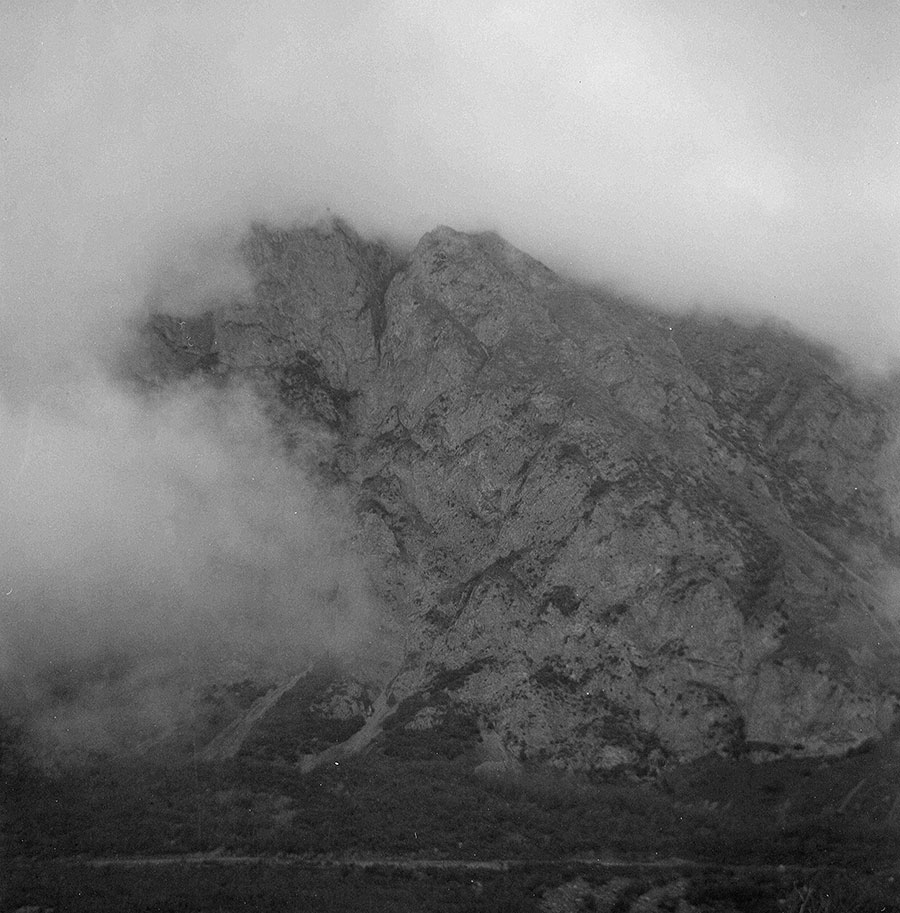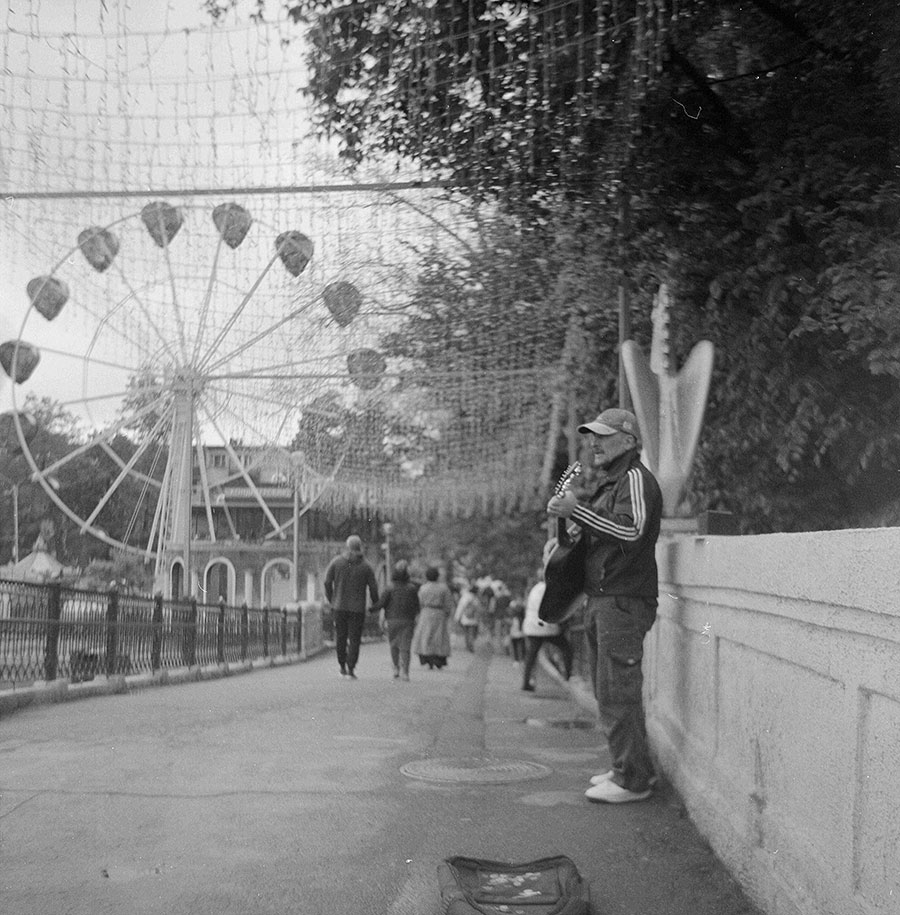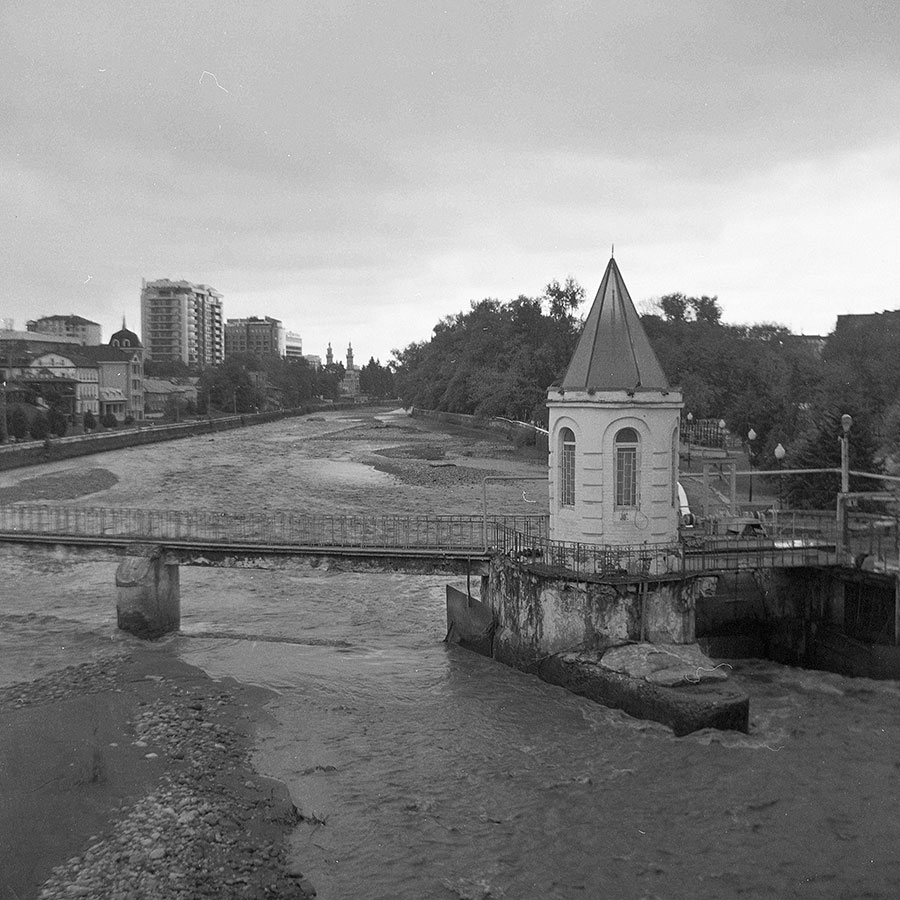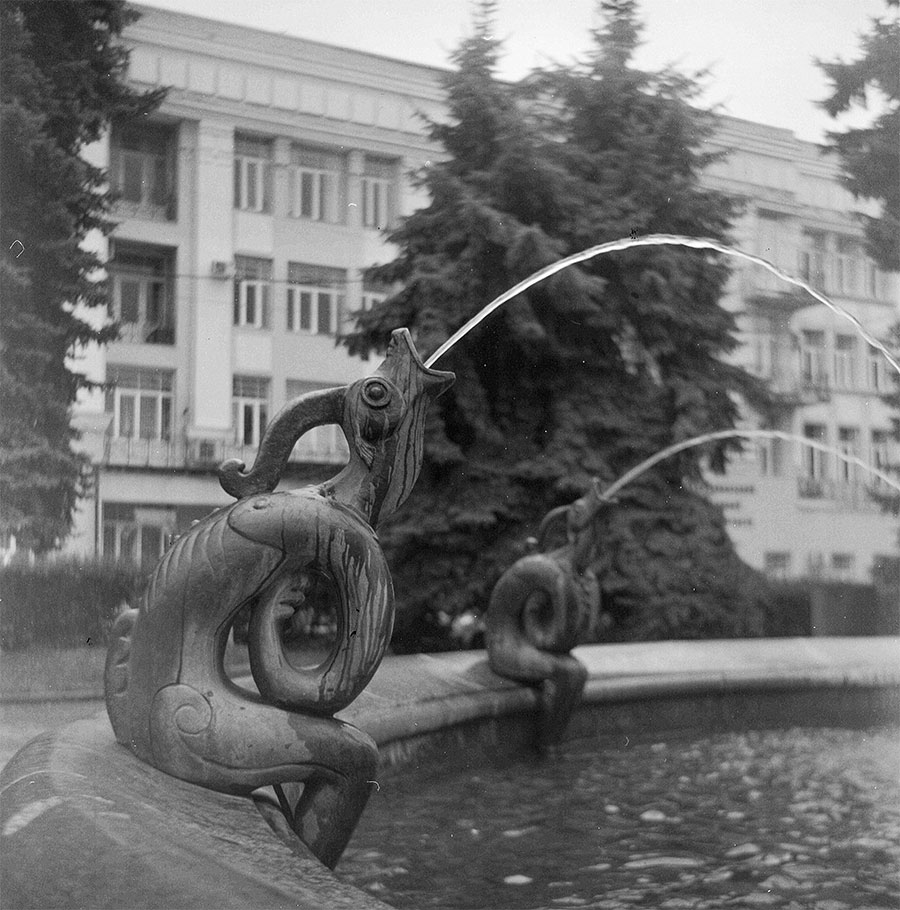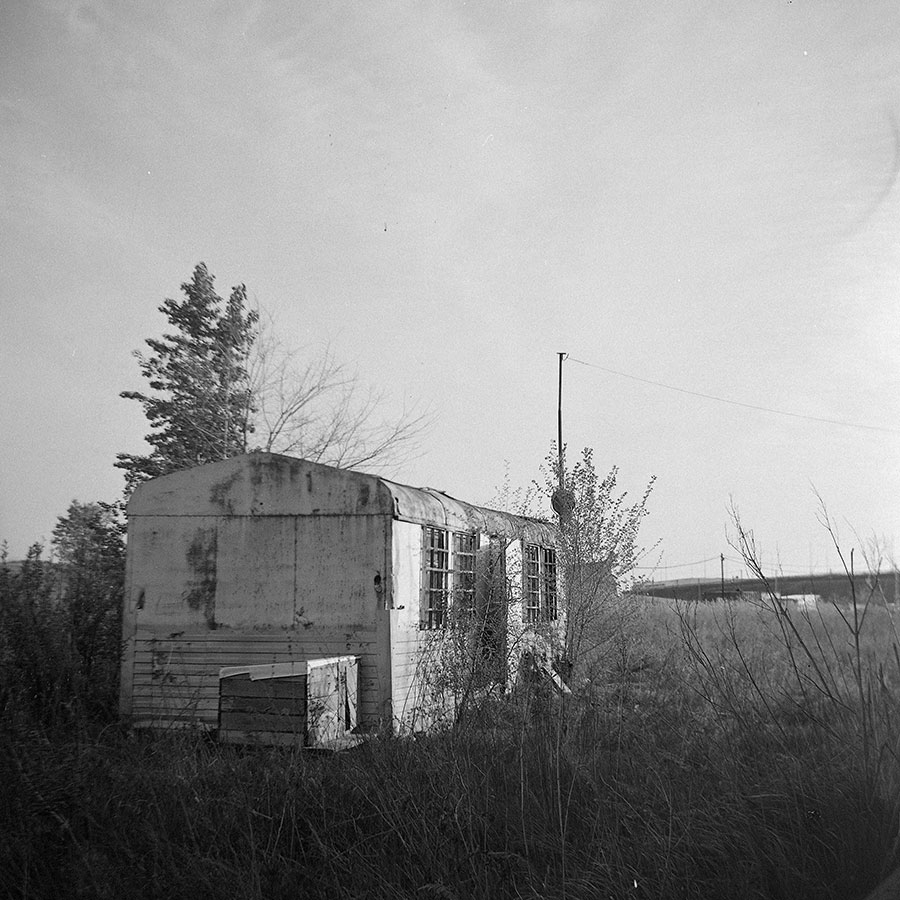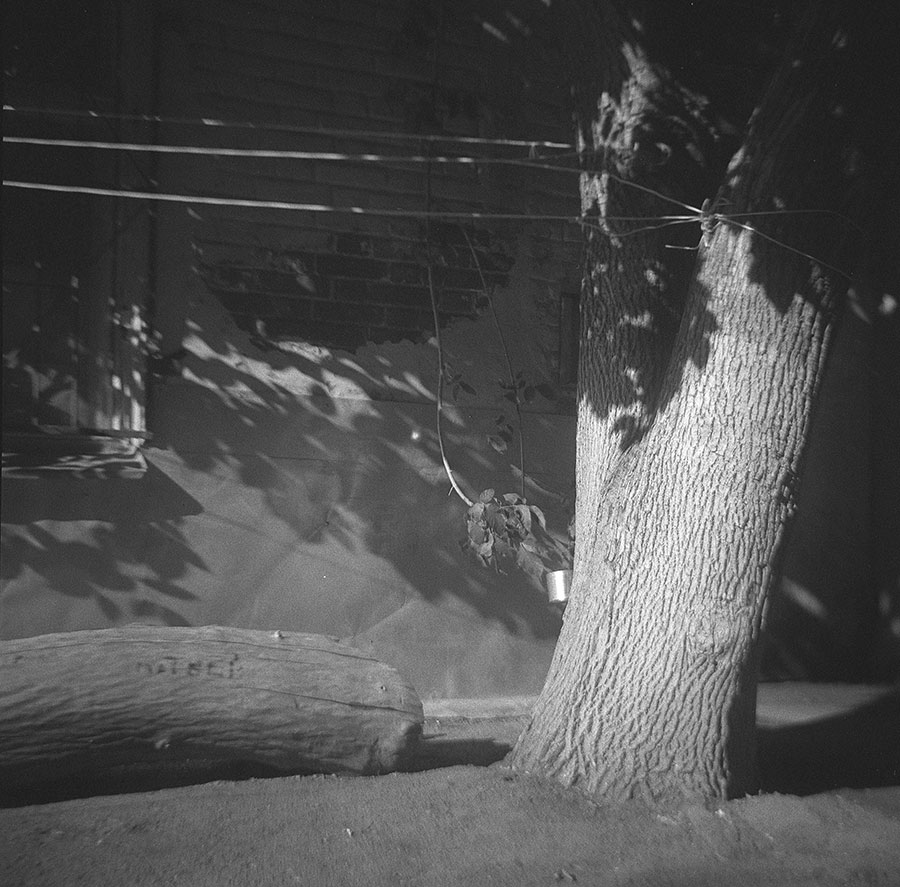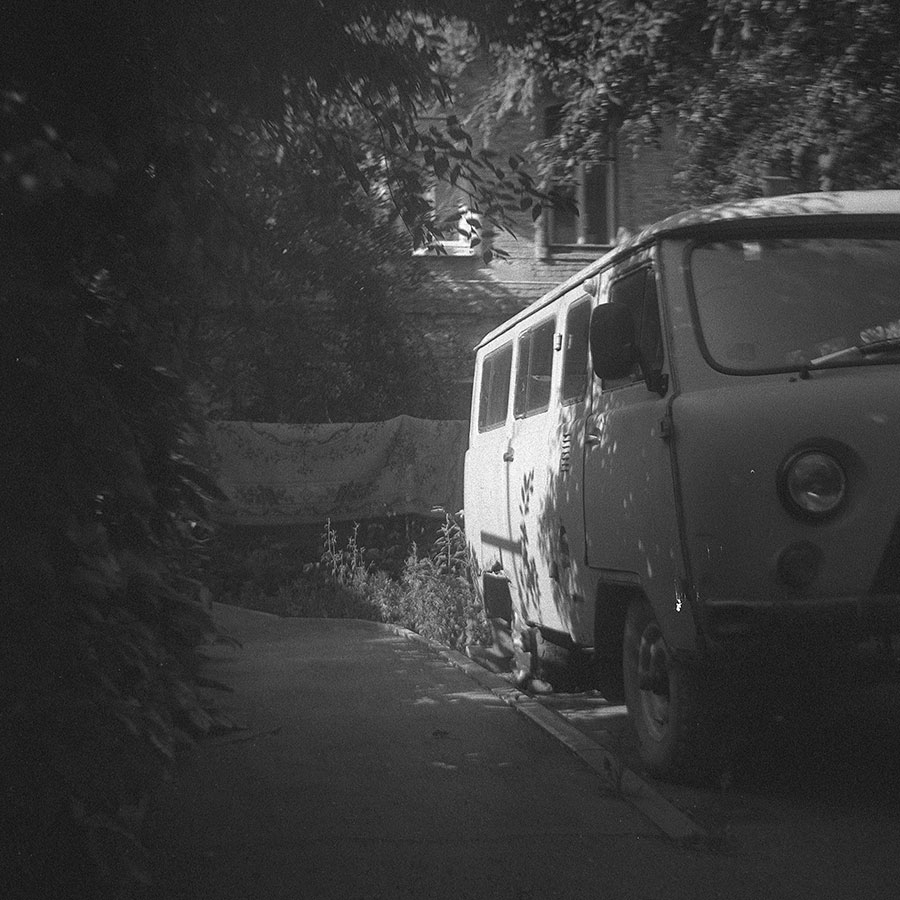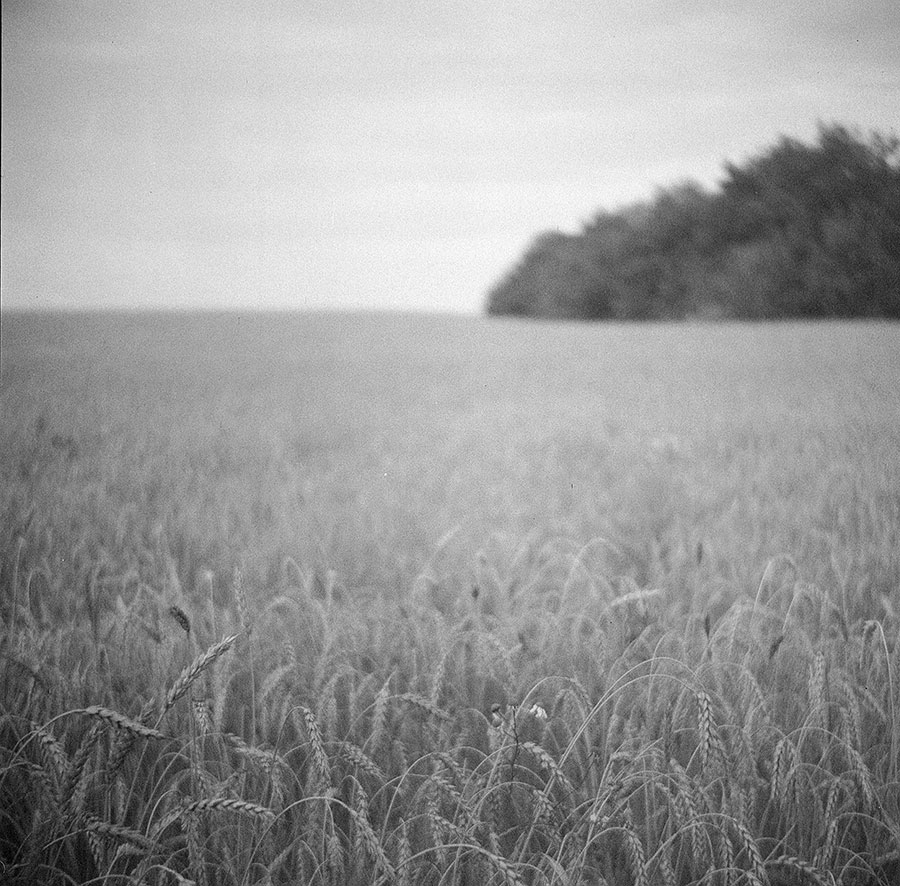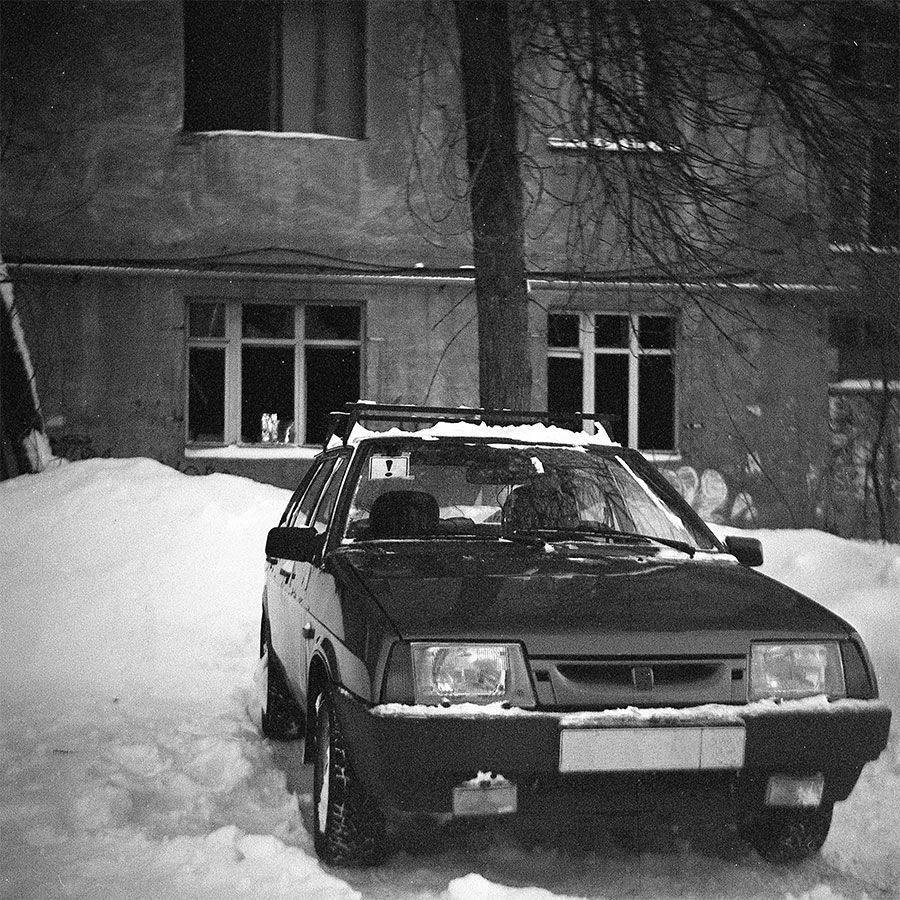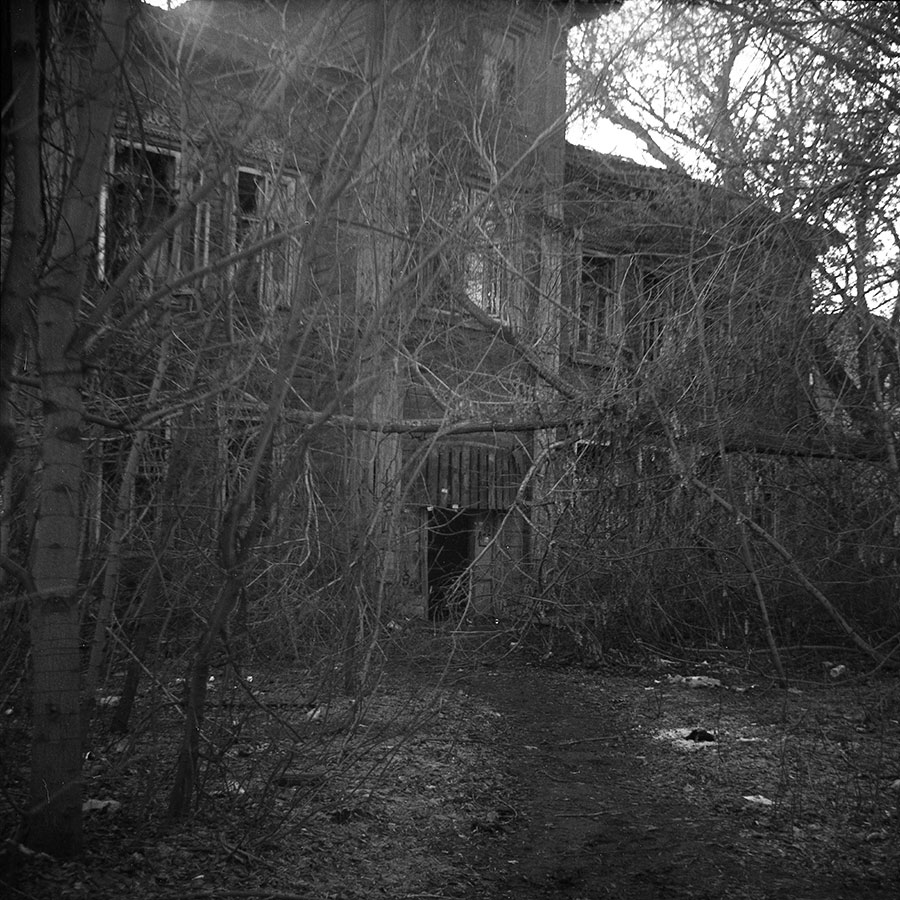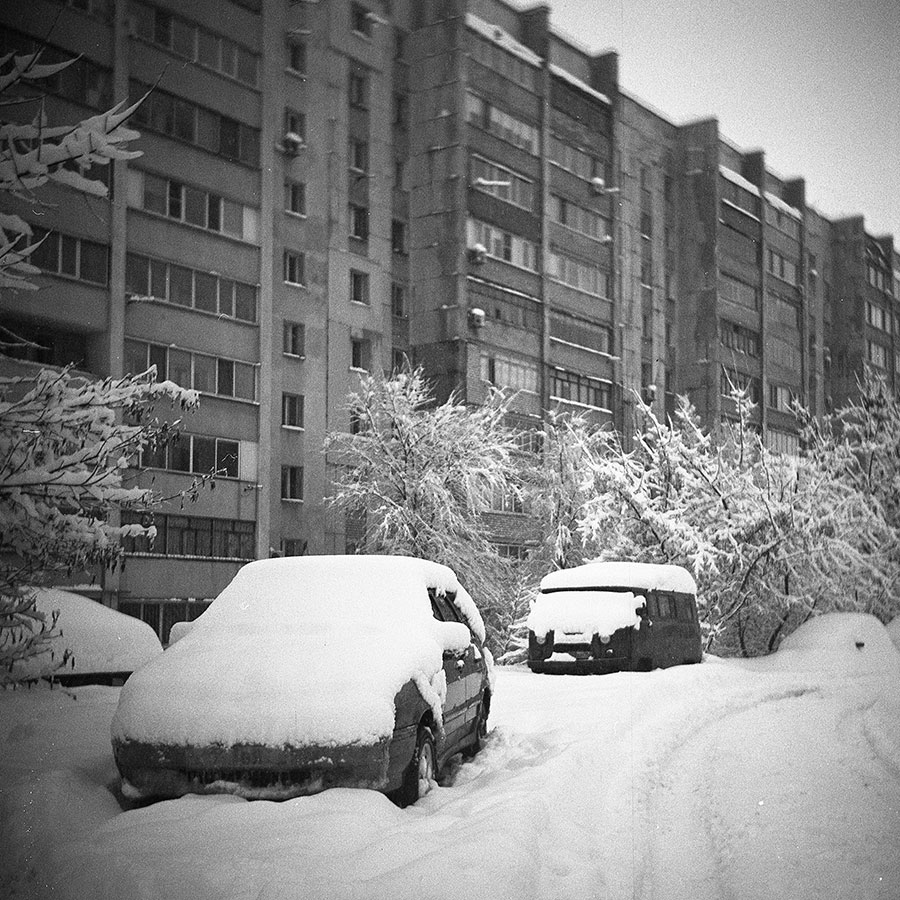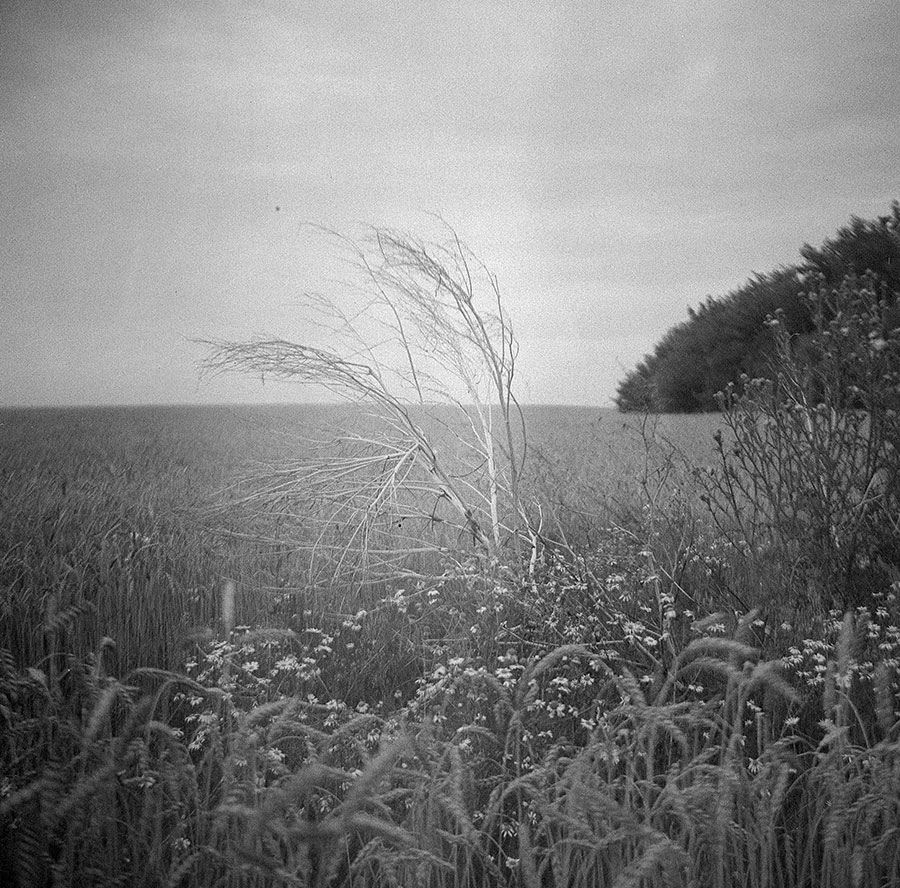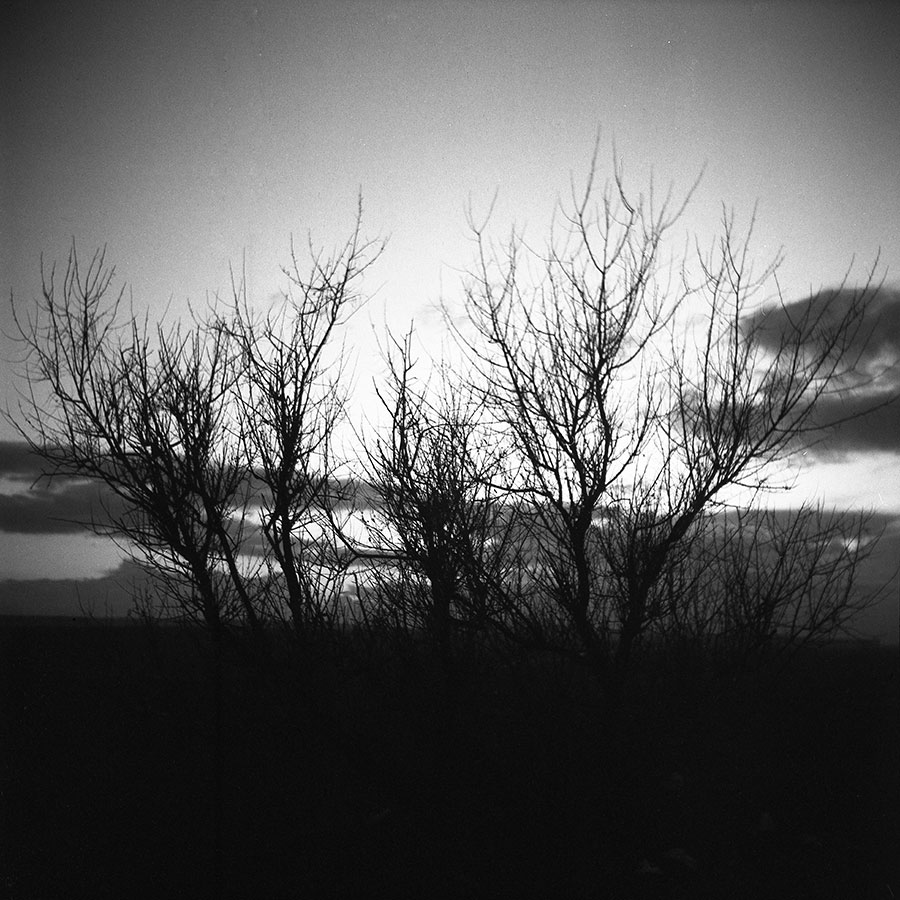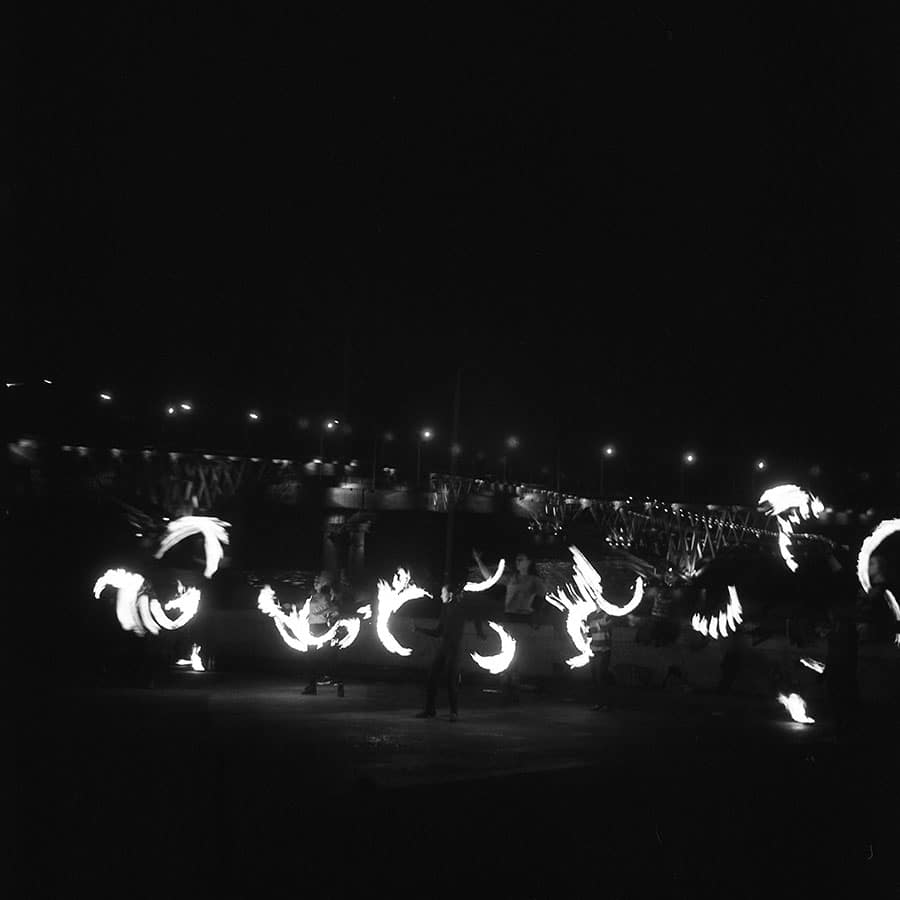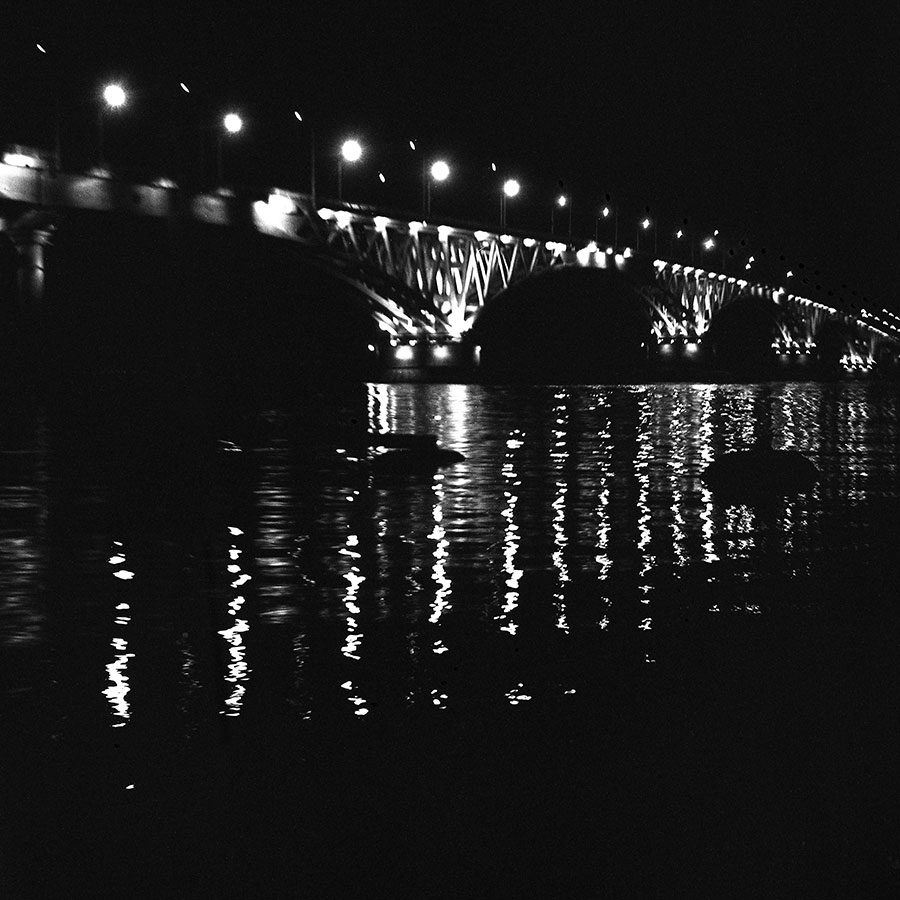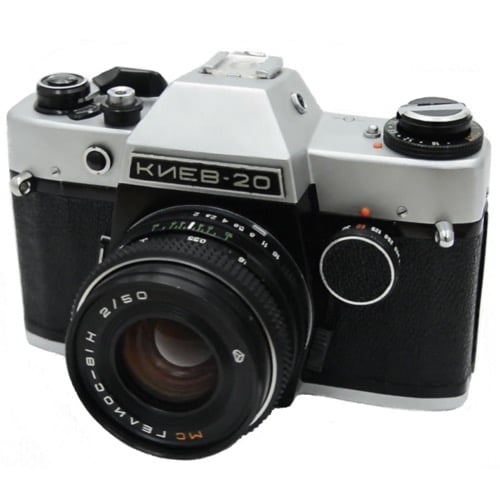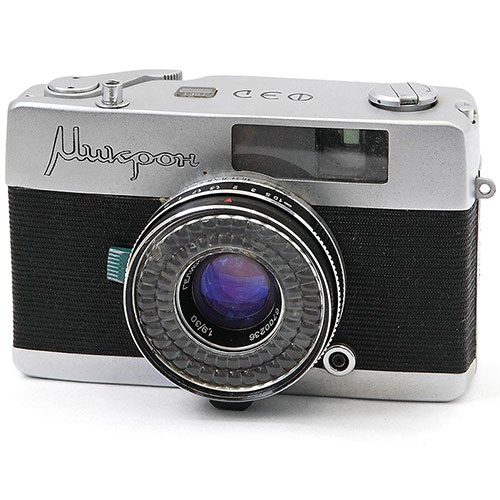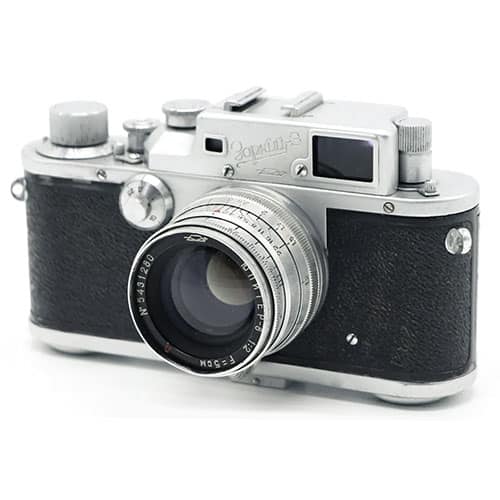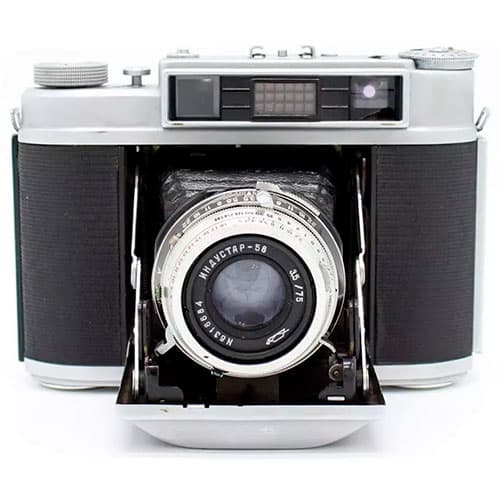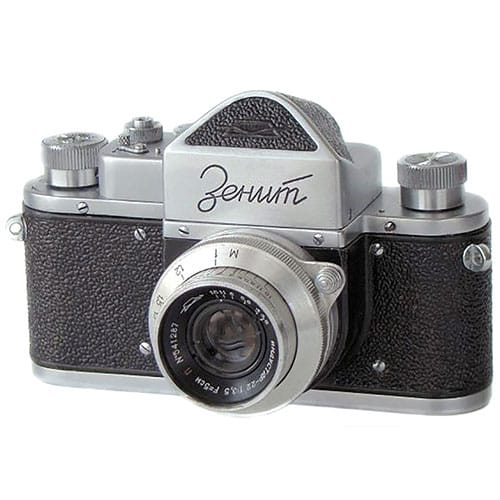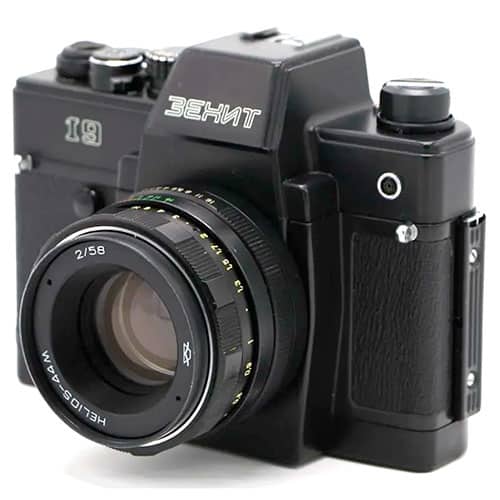Komsomolets
The Komsomolets is a medium-format twin-lens reflex camera produced at the GOMZ factory in Leningrad from 1946 to 1951.
It appears during the early post-war years as an affordable, simple, and reliable model intended for amateur use and basic photographic education.
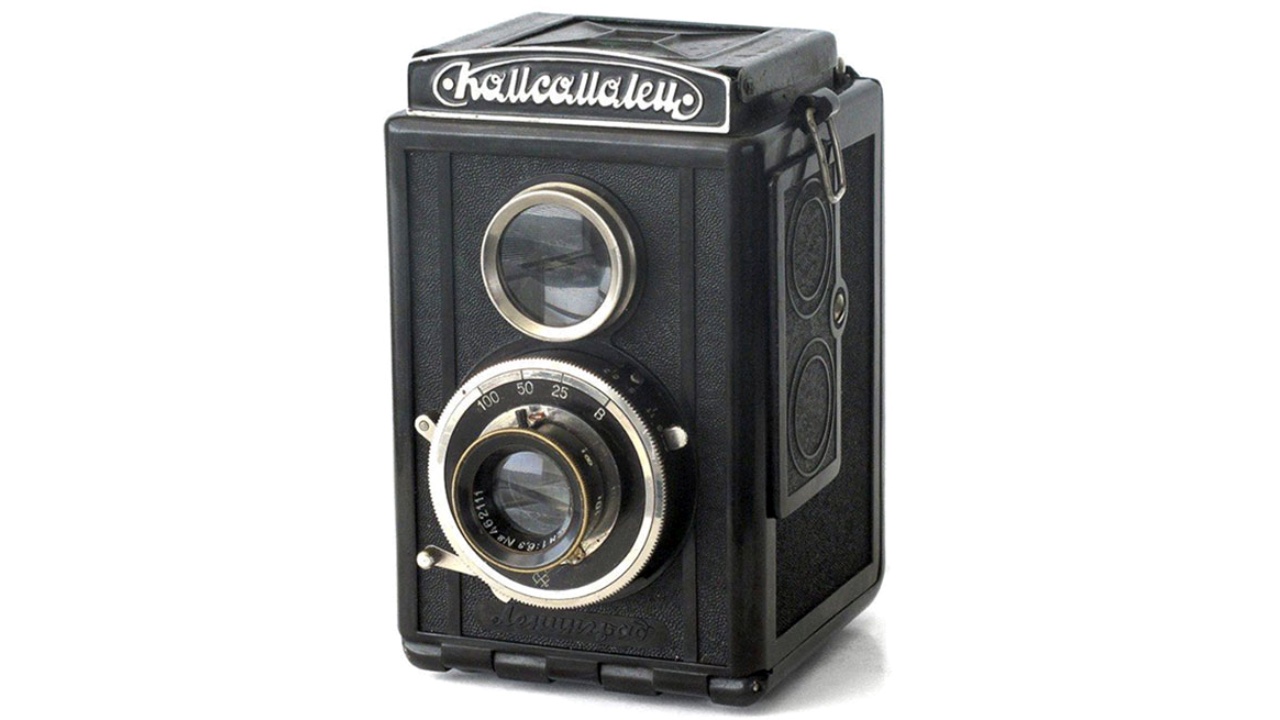
Komsomolets Specifications
- Type: 120 film TLR camera
- Manufacturer: GOMZ plant
- Production period: 1946-1951
- Format: 6x6cm on 120 film
- Lens mount: fixed lens
- Taking lens: T-21 f6.3/80
- Viewing lens: f2.8/80
- Shutter: leaf shutter with speeds of 1/25, 1/50 and 1/100 sec, plus B
- Viewfinder: waist-level finder
- Light meter: none
- Flash synchronization: none
- Self-timer: none
- Weight: 525 grams
Komsomolets Overview
This camera is one of the earliest Soviet TLRs designed for 120 roll film, marking a shift from pre-war plate cameras to simple and more compact film-based systems.
The Komsomolets camera was created on the basis of the design of the German Voigtländer Brillant pseudo-twin-lens camera and became both a technical and conceptual foundation for later Lubitel models.
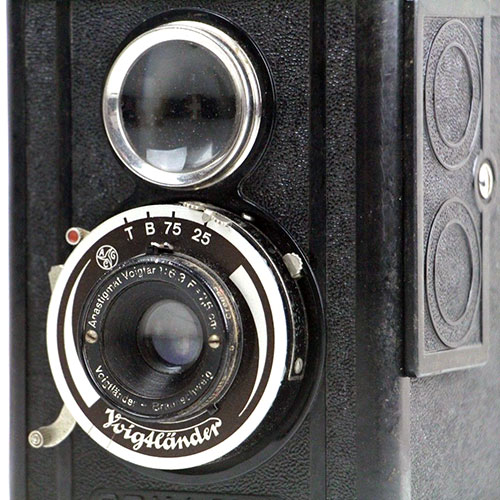
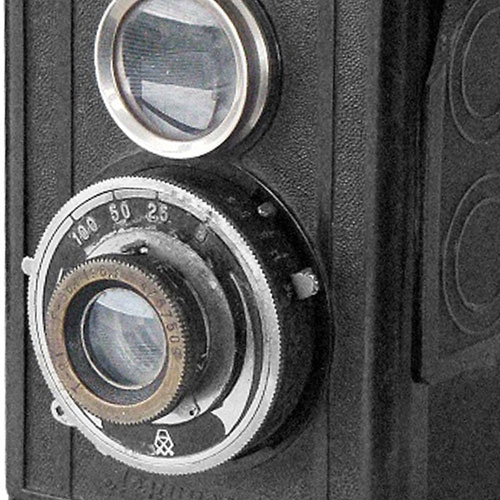
Its release marks the beginning of large-scale roll-film camera manufacturing in the USSR. Before that, Soviet photographers mostly used plate cameras or folding models, as the Fotokor-1 camera.
The Komsomolets simplifies the shooting process – film loading, focusing, and frame composition become accessible even for beginners.
The camera’s structure is also very straightforward: a 6×6 cm format on 120 film, a waist-level viewfinder, and a fixed Triplet lens combined with a central or leaf shutter.
The viewfinder is not coupled with focusing; the upper lens serves only for framing, while the lower one forms the image on film.
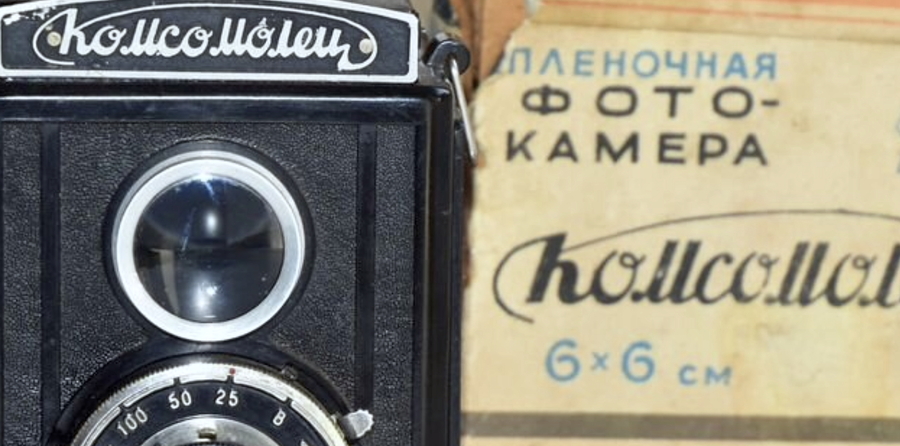
Positioned between pre-war experimental designs and later consumer cameras like the Lubitel, the Komsomolets was an important transitional step in Soviet optical engineering.
In total, around 306,000 units are made, and throughout the entire production of the camera, a number of minor changes have been made to the design and functionality.
For example, in the first versions, there was a frame counter with blocking of film movement for one frame. But according to the “good old” Soviet tradition, this function did not work as it should, and it was decided to remove this feature and simplify the mechanism.
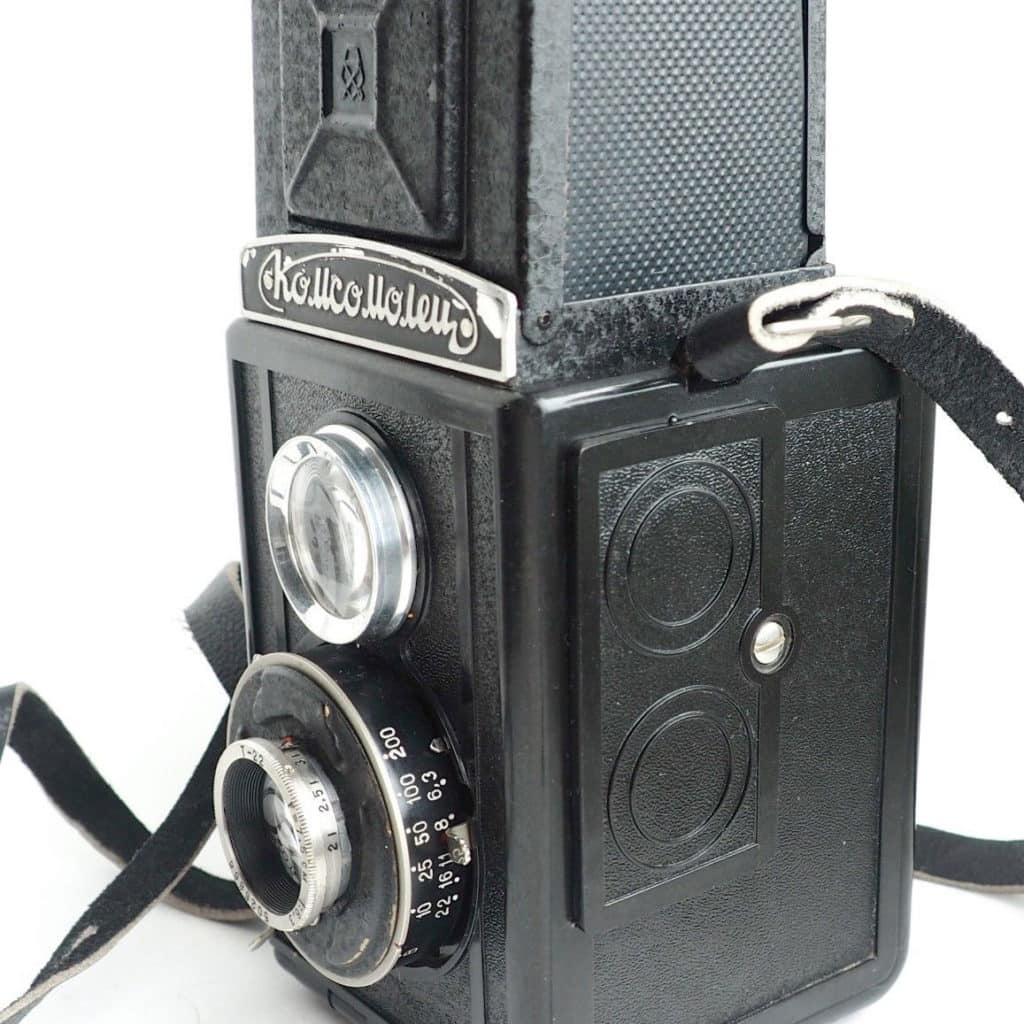
Komsomolets Lens
The Komsomolets twin-lens reflex camera (TLR) is equipped with two lenses – a viewing lens for framing and a taking lens for the actual exposure.
Early production units used the T-21 6.3/80 lens, a triplet-type optical design produced at GOMZ. It had a maximum aperture of f/6.3 and a minimum of f/16, providing moderate sharpness with soft corners, typical of Soviet triplet lenses of the 1940s. The focal length of 80 mm gave a standard angle of view for medium format 6×6 cm photography.
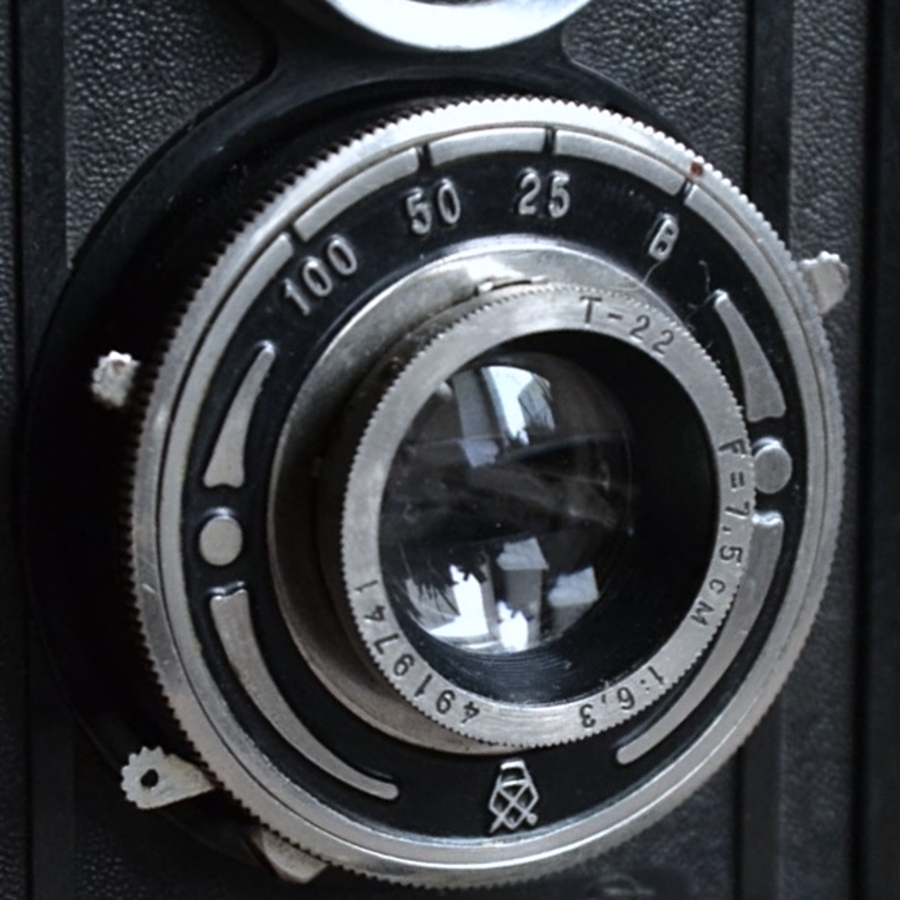
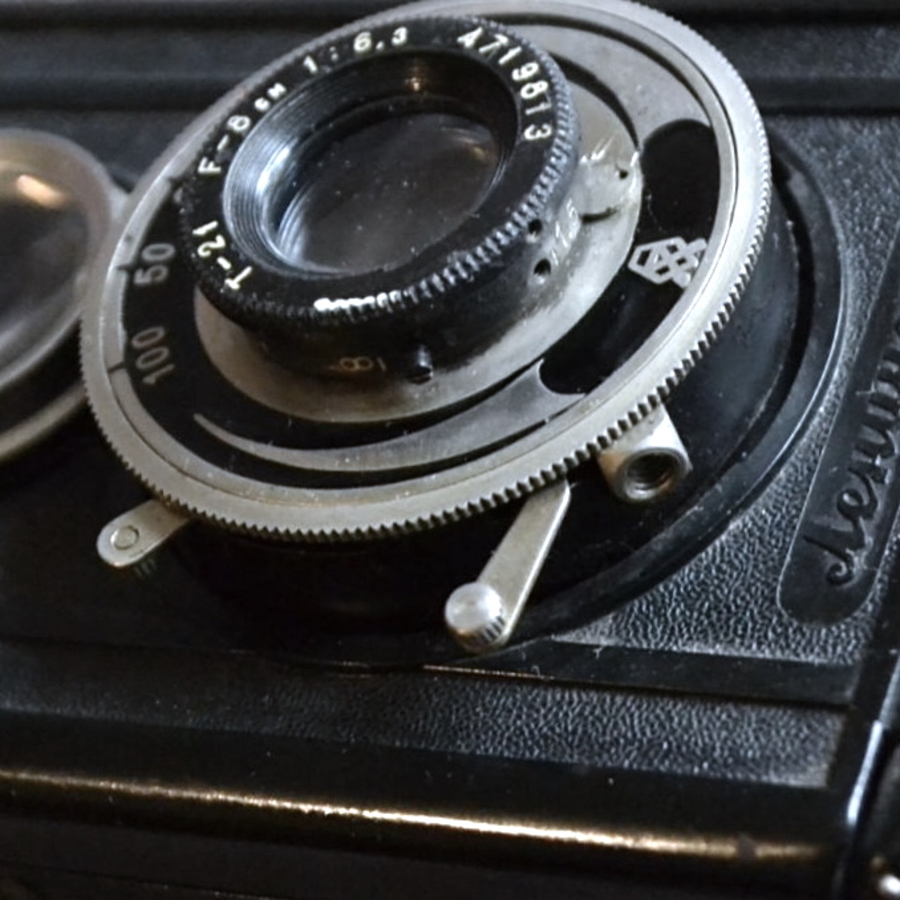
In 1949, the taking lens was replaced by the T-22 6.3/75, also a three-element triplet. It offered slightly better resolution, a wider field of view due to the shorter 75 mm focal length, and improved contrast thanks to refined optical polishing and later anti-reflective coatings.
The T-22 lens remained in use through the Komsomolets Model B (1950) and became one of the early predecessors of the lenses later used on the Lubitel series.
Focusing on the Komsomolets is purely scale-based, as there is no mechanical linkage between the viewing and taking lenses. The user adjusts focus by rotating the lens barrel and reading the distance on the engraved scale.
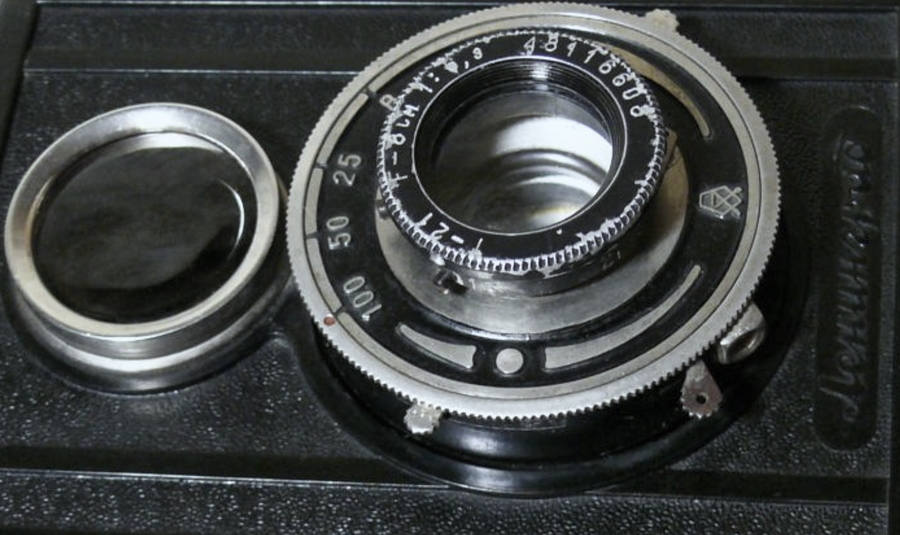
Two small red marks indicate a hyperfocal distance setting, which produces acceptable sharpness from about 4 m to infinity – a practical solution for zone focusing on a scale-focus camera.
The optical performance of both T-21 and T-22 lenses is modest but characteristic of early Soviet medium-format optics – slightly soft contrast, good central sharpness, and smooth rendering.
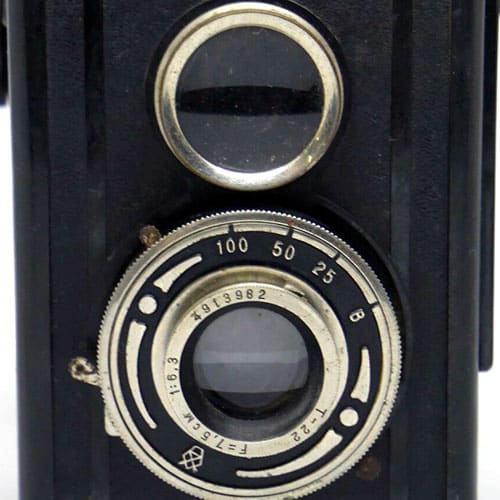
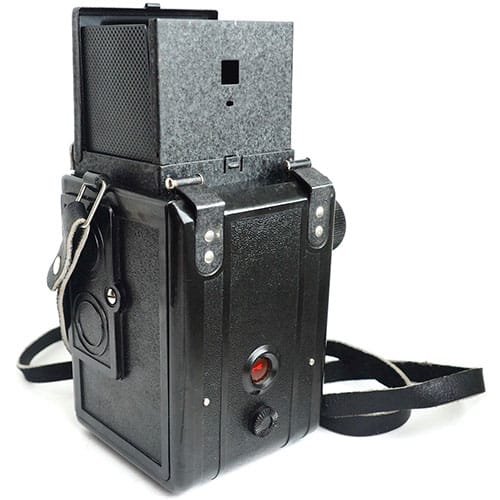
Komsomolets Shutter
The Komsomolets uses a simple leaf shutter mounted in the front lens block, typical for Soviet TLR cameras of the late 1940s.
It is a fully mechanical unit with manually selected speeds and no synchronization or self-timer. In cameras equipped with the T-21 6.3/80 lens, the shutter provides four settings — 1/25, 1/50, 1/100 seconds, and the Bulb (B) mode for long exposures.
Exposure speed is adjusted by rotating a control ring around the lens mount. Aperture is set by a small lever on the left side of the lens, while the cocking lever on the right prepares the shutter for release.
Below it is a release lever that you press with your thumb to fire the camera. A threaded socket for a cable release is located just beneath, allowing convenient use on a tripod.
Later production units, such as the Komsomolets Model B, use the improved ZT-5 shutter made by GOMZ. This version provides five timed speeds – 1/10, 1/25, 1/50, 1/100, 1/200 seconds and Bulb mode, giving more control over exposure.
The mechanism remains purely mechanical, without flash sync or synchronized film advance. This type of operation was typical for almost all later Lubitel cameras.
The shutter operates quietly and with a distinct mechanical feel. It must be cocked before each shot, which adds to the deliberate rhythm of shooting with the camera.
Being a leaf, or central shutter, it sits between the lens elements, ensuring consistent exposure across the frame and eliminating issues such as focal-plane distortion.
Overall, the Komsomolets shutter remains a straightforward and dependable system – mechanical, precise, and easy to service. It fully reflects the philosophy of early GOMZ and overall Soviet medium-format cameras.
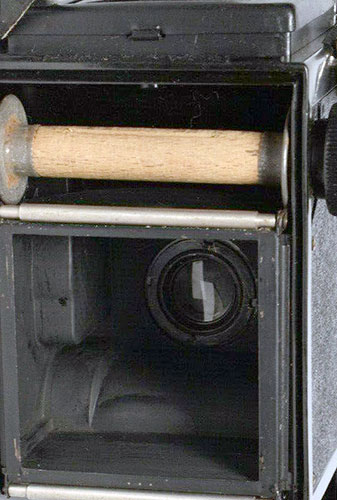
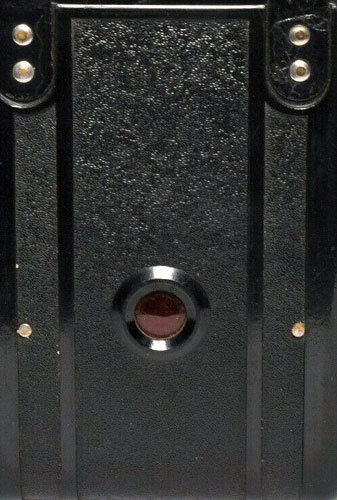
Camera Body and Controls
The Komsomolets has a compact rectangular body made mostly of bakelite, glass, and metal elements. The front panel holds both lenses – the upper viewing lens and the lower taking lens, surrounded by the central shutter assembly. The camera’s name Комсомолец is embossed on the top plate above the viewfinder hood.
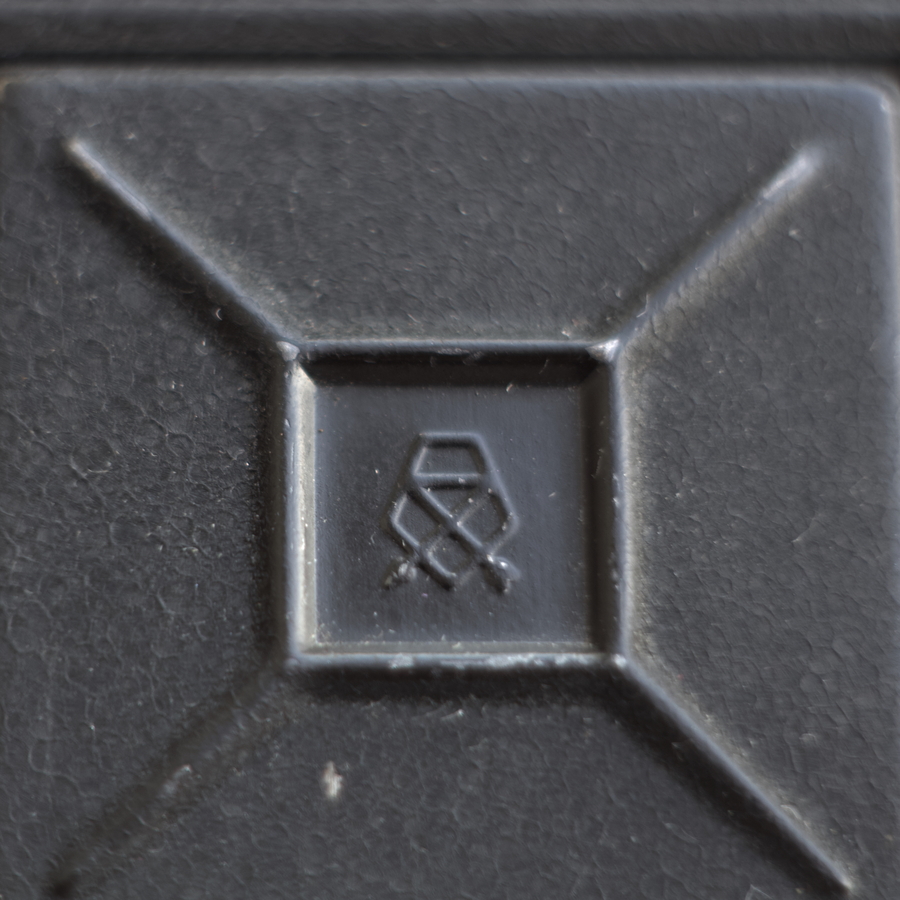
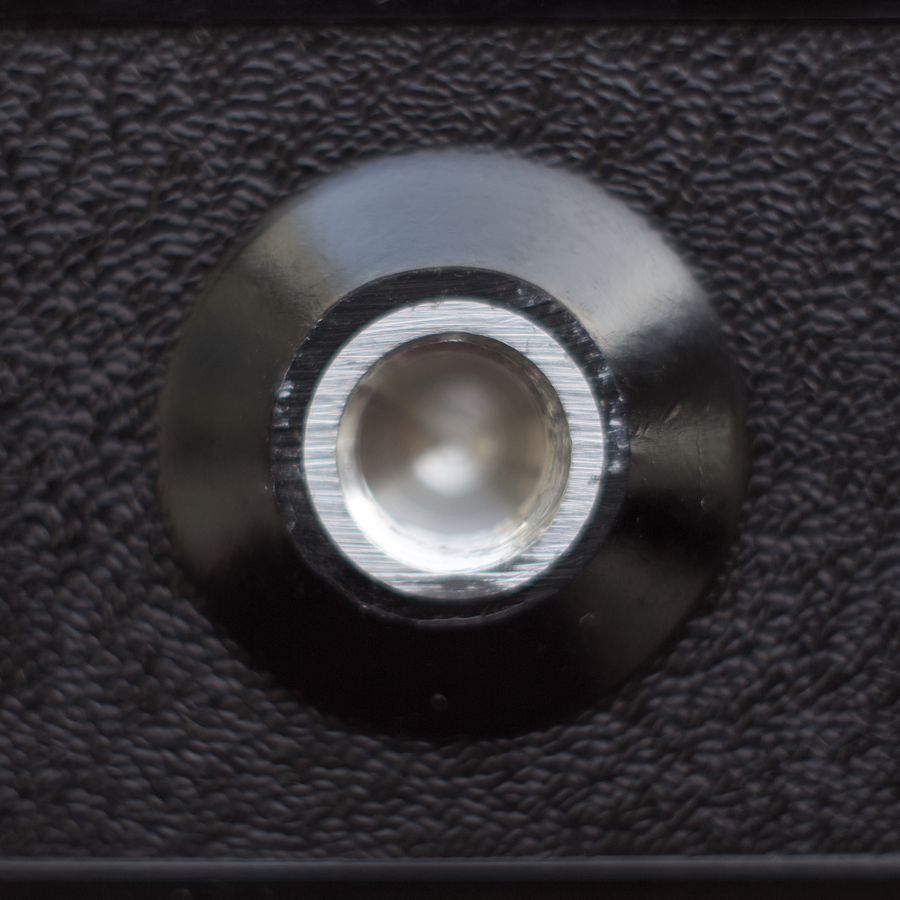
The camera body measures about 124×98×91 mm and weighs around 525 grams. The top part contains the waist-level viewfinder, which opens upward with metal flaps.
Inside is a bright viewing screen that provides a laterally reversed image. The hood can also be used as a frame-type viewfinder when the photographer looks through the small rectangular cutout at the back – a simple and practical solution when shooting in bright sunlight.
On the right side sits the film advance knob, used to wind the 120 roll film manually. To control frames, the user looks in the red window in the back cover to check the frame number printed on the paper backing of the film.
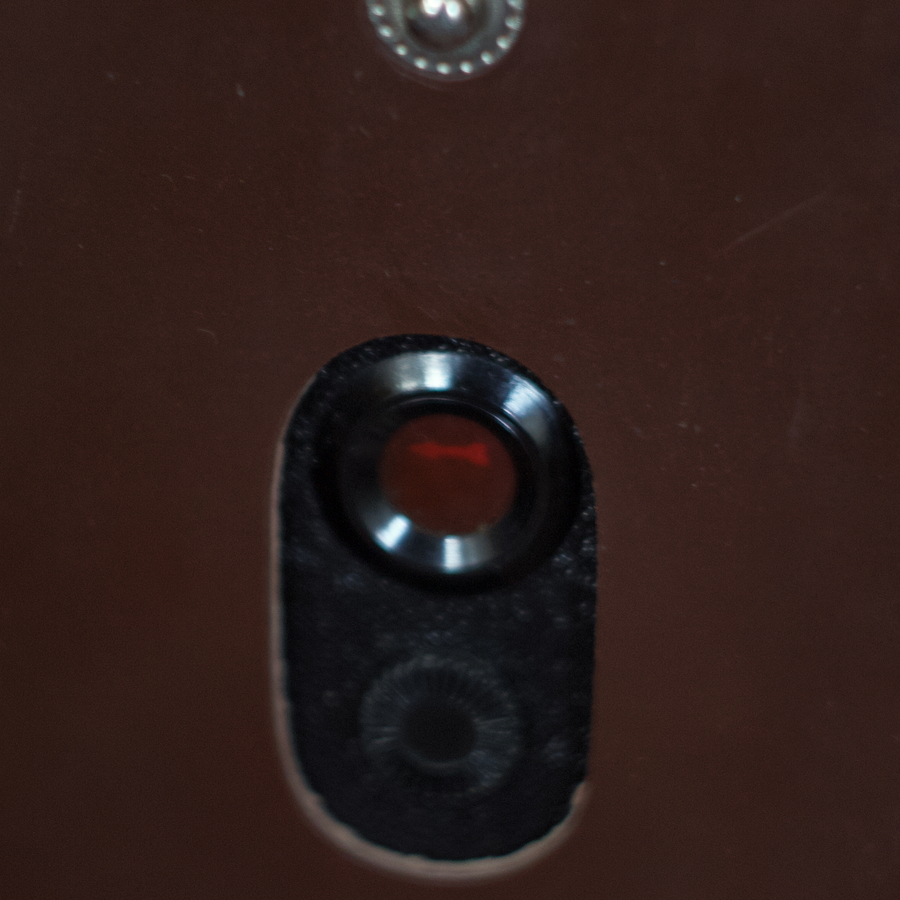
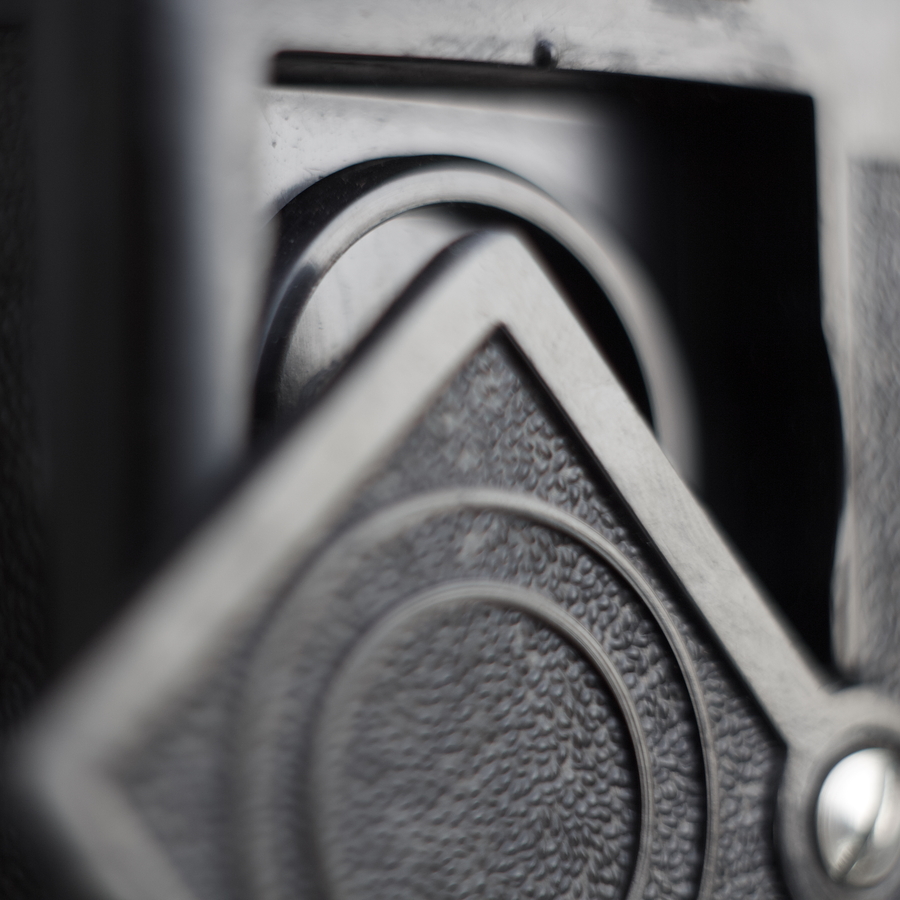
The camera back is locked with a simple spring latch. Film loading is straightforward: the new roll is inserted in the lower chamber, and the film leader is pulled up to the top spool. Since the Komsomolets uses 120 film, it produces 12 exposures per roll in the 6×6 cm format.
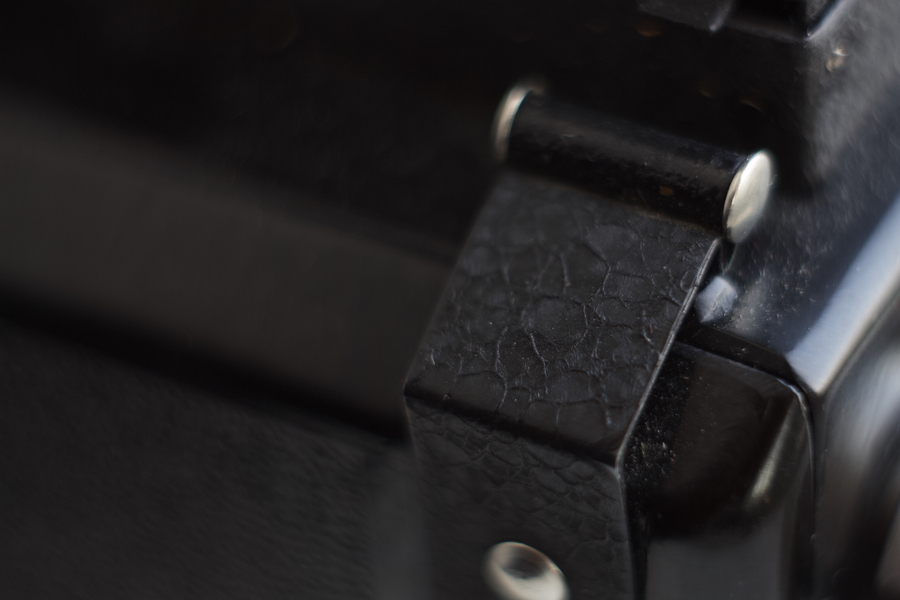
Conclusion
So what can be said about this pseudo TLR? This is a very well-made camera, which is not at all a toy. It is equipped with a fairly good Triplet lens, which gives beautiful classic photos.
Materials were at a decent level, especially for the Soviet Union. Ease of use is also at a good level. But here we must thank the Germans who created the original camera.
In general, if you want to get a wonderful twin-lens camera and take medium-format photos while spending a small amount of money, then Komsomolets will be the perfect solution for you.
But at the same time, for the same money (and maybe for less) you can buy a more advanced Lubitel 1 or Lubitel 2 camera, which had a ground-glass dot in the center of the viewfinder. In addition, the Lubitel cameras were equipped with an improved Triplet T-22 4.5/75 lens.
The ability to focus using a ground glass circle and faster lens, combined with very low prices (in fact, Lubitel is now one of the cheapest non-toy medium format cameras), makes Lubitel cameras more interesting to buy than Komsomolets cameras overall.
KOMSOMOLETS Sample Photos
